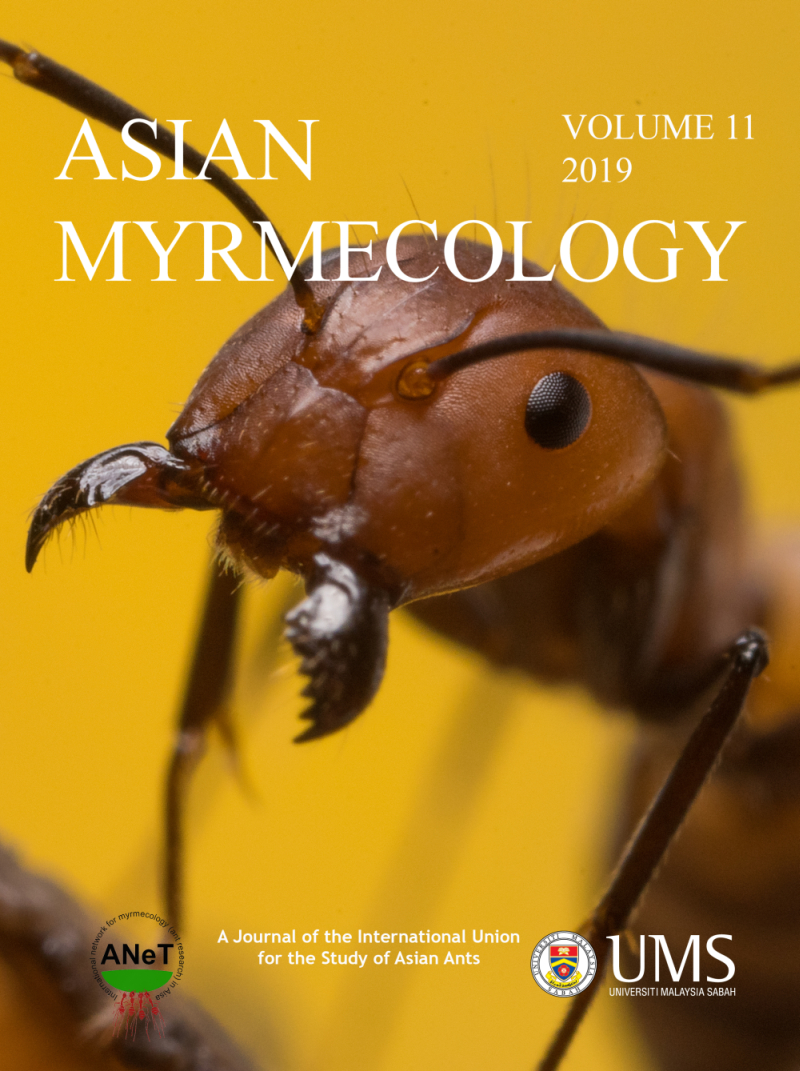ASIAN
MYRMECOLOGY
Image: François Brassard
Ecology and Distribution
Asian Myrmecology, Volume 2, pages 51-62, published December 2008
DOI: 10.20362/am.002005
Remote detection and distinction of ants using nest-site specific LISS-derived Normalised Difference Vegetation Index
AJAY NARENDRA1, 2* & T.V. RAMACHANDRA1
Abstract:
This study in Western Ghats, India, investigates the relation between nesting sites of ants and a single remotely sensed variable: the Normalised Difference Vegetation Index (NDVI). We carried out sampling in 60 plots each measuring 30 x 30 m and recorded nest sites of 13 ant species. We found that NDVI values at the nesting sites varied considerably between individual species and also between the six functional groups the ants belong to. The functional groups Cryptic Species, Tropical Climate Specialists and Specialist Predators were present in regions with high NDVI whereas Hot Climate Specialists and Opportunists were found in sites with low NDVI. As expected we found that low NDVI values were associated with scrub jungles and high NDVI values with evergreen forests. Interestingly, we found that Pachycondyla rufipes, an ant species found only in deciduous and evergreen forests, established nests only in sites with low NDVI (range = 0.015 - 0.1779). Our results show that these low NDVI values in deciduous and evergreen forests correspond to canopy gaps in otherwise closed deciduous and evergreen forests. Subsequent fieldwork confirmed the observed high prevalence of P. rufipes in these NDVI-constrained areas. We discuss the value of using NDVI for the remote detection and distinction of ant nest sites.
Keywords:
ants, NDVI, nest site selection, Western Ghats, canopy gap, Pachycondyla rufipes
Get PDF (418K):
1Energy and Wetland Research Group, Centre for Ecological Sciences, Indian Institute of Science, Bangalore 560012, India
2ARC Centre of Excellence in Vision Science, Research School of Biological Sciences, Australian National University, ACT 2601, Australia
*Corresponding author: ajay.narendra@anu.edu.au



